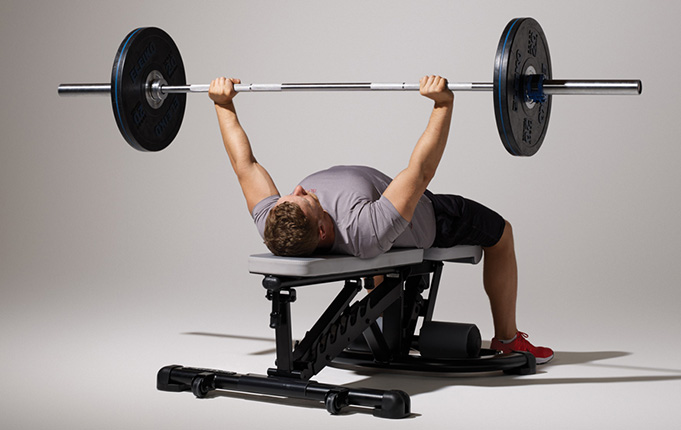Along with broad shoulders, wide back, muscular arms, chiseled abs, and toned legs, a big chest is what every man in the gym desires, since it is one representation of strength and masculinity.
The bench press is an upper body training workout that involves pressing a weight upwards from a supine position. At present, the bench press has three variants: the inclined, the flat (also known as supine), and decline. Anatomically, the exercise targets the pectoralis major, in addition to the supporting chest, shoulder muscles, arm, serratus anterior, scapulae fixers, coracobrachialis, trapezii, and the triceps. Generally, a barbell is used to used the weight; however, a pair of dumbbells can also be used as alternative or a as a separate routine.
With regard the execution of the bench press, the exercise is done with the person doing the exercise lying on his back with a weight grasped in both hands. Then, the person pushes the weight upwards until the arms are extended. However, it is important to note that the elbows should not lock. The weight is then lowered to the chest level and this counts as one repetition, or rep.
There are some key points to remember when doing the bench press. According to Strong Lifts, the bar should be lowered to the middle of the chest and is then pressed back up. As per the publication, proper bench press starts with lying on a bench with the feet on the floor. Then, the bar is unracked with straight arms. After that the bar is lowered to the middle of the chest and is pressed back up. Also, the buttocks should be kept on the bench, presumably to prevent unnecessary movements, which may ruin balance and proper form and lead to injury.
According to the publication, the bench press is a type of workout routine that uses heavy weight, allowing a person to lift the most weight, even than the overhead press designed for the shoulders. Thus, balance and body mechanics should be observed to prevent injury to the shoulder complex.
The grip is an area of concern to the bench press. While the closed or narrow grip is intended for the triceps, a wide grip targets the chest area; however, the grip should not be too wide, which is one of the common mistakes lifters do when they do the bench press, according to Men’s Fitness. As per the publication, the type of grip depends on the length of the arms. For people with shorter arms, a very wide grip may put pressure to the elbows, as they are forced to exceed 90 degrees while lifting.
According to Muscle and Fitness, the person should keep a tight grip on the bar at all times, since a tighter grip allows more tension in the chest, upper back, and lower arms. The chest should be kept up, which they call thoracic extension, throughout the movement. Also, the elbows should be tucked and be at approximately 45 degrees from the person’s side. The weight is unracked and the person breathes deeply and holds it. The weight is rowed down to the chest by pulling the bar apart like a bent over row. The person should let the weight drop, but without relaxing. While the bench press concentrates on the chest area, the back, glutes, hips, and legs, are also tight and contracted. As the bar touches the chest, the feet are driven downward and the movement is reversed, the bar is pushed upward. The arch and the thoracic extension should not fade as the person does the movement.
With correct form and execution, one can have a correct chest workout. It is also important to incorporate proper nutrition, adequate rest, and right attitude.
Source: coachmag.co.uk








